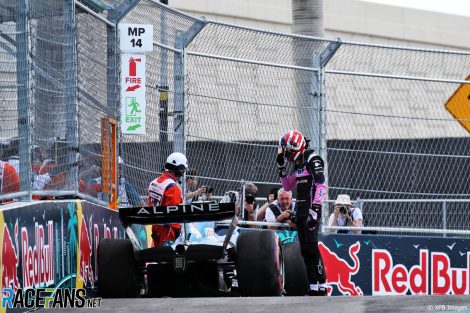Carlos Sainz Jnr’s heavy crash on Friday at the Miami International Autodrome chicane prompted calls from drivers for impact-absorbing TecPro barriers to be added at the corner.
Sebastian Vettel was among those who raised concerns at the time. “It will always damage the car when you go off,” said the Aston Martin driver. “But the question is, where you’re landing, whether there’s concrete or TecPro.
“I don’t know what can be done overnight when I think when we come back, it’s important to look at all the places and see whether you can improve.”
The run-off remained unchanged and the following day Esteban Ocon suffered a 51G impact at the same stretch of concrete barrier. The force involved was comparable to Max Verstappen’s crash at Silverstone’s considerably quicker Copse corner last year.
Like Sainz, Ocon was declared fit to race, though he said afterwards he was only at “50% physically” due to the hard hit he sustained.
The two heavy crashes prompted further calls for TecPro barriers to be used. The deformable structures which are widely used across F1 tracks were developed in collaboration with the FIA Institute.
However Jochen Braunwarth, the director of motorsport at barrier makers Geobrugg, told RaceFans pre-race simulations of likely crashes at that point on the circuit had led to the conclusion that a concrete barrier was the most suitable solution, due to the angles of impact predicted.
“Usually the areas where you have a very shallow impact angle the idea is, as with a guardrail or a concrete block barrier on a highway, to bounce off and then slide along.
“As soon as that impact angle is reaching a certain angle, you need to put a TecPro barrier, you need to put something. And this simulation, which was done at the FIA, was suggesting that the impact angle there is a very shallow angle which didn’t make it necessary for the FIA to put in any TecPro,” Braunwarth explained.
As primarily…

